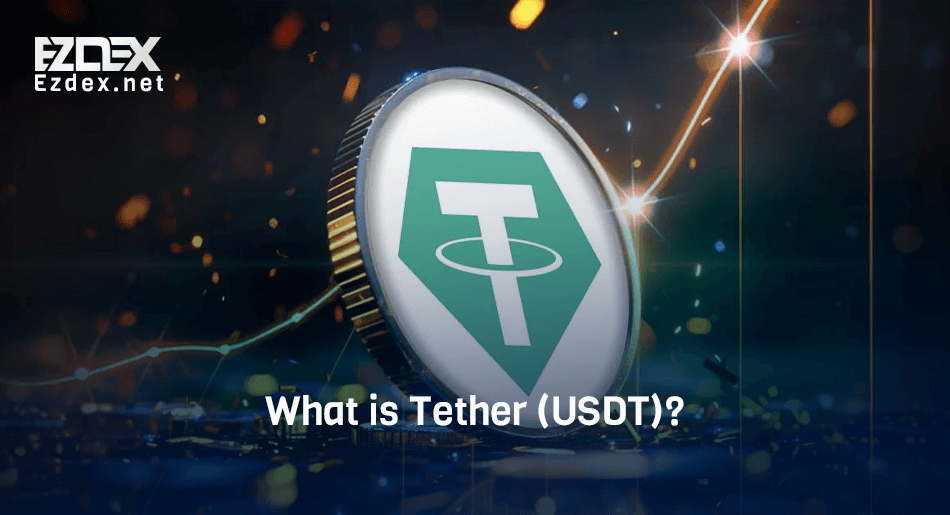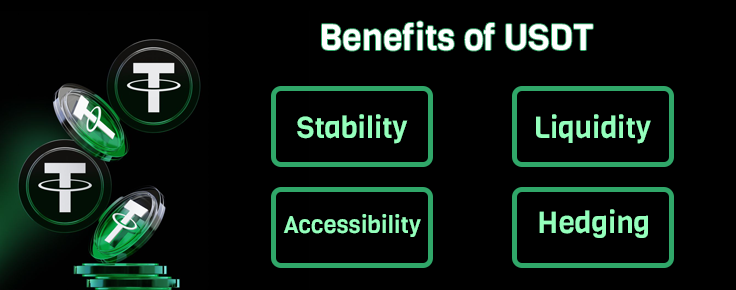What is Tether (USDT)? A Comprehensive Guide to the World's Leading Stablecoin

Tether (USDT) Explained in Simple Words
Watch the Tutorial and Ultimate Guide and Real-World Use Cases of Tether.
In the rapidly evolving world of cryptocurrencies, Tether (USDT) stands out as a unique digital asset, designed to bring stability to the volatile market of crypto. As the most widely used stablecoin, Tether has revolutionized the way people engage with cryptocurrencies by bridging the gap between traditional finance and the digital economy. This article will explore what Tether is, its history, how it works, its advantages, and various use cases.
Table of Contents
What is Tether (USDT)?
Tether (USDT) is a type of cryptocurrency known as a stablecoin. Unlike other cryptocurrencies like Bitcoin or Ethereum, which are known for their price volatility, Tether is pegged to the value of a traditional fiat currency, most commonly the US Dollar (USD).
The primary purpose of Tether is to provide the benefits of blockchain technology while maintaining a stable value. This makes it a popular choice for traders, investors, and businesses who want to avoid the unpredictability of other digital assets while USDT price is always fixed at $1.
The History of USDT
Tether was launched in 2014 by a group of developers led by Brock Pierce, Reeve Collins, and Craig Sellars. The project was initially called Realcoin before being rebranded as Tether.
The idea behind Tether was to create a cryptocurrency that could act as a stable alternative to traditional fiat currencies, facilitating easier and more predictable transactions within the crypto space.
Tether Limited, the company behind USDT, claimed that each Tether token was backed 1:1 by reserves in traditional currency, ensuring that users could redeem their Tether tokens for the equivalent amount in fiat currency at any time.
Despite its success, Tether has faced scrutiny and controversy. Questions have arisen about whether Tether's reserves fully back all issued tokens, leading to investigations and legal challenges. However, Tether Limited has repeatedly stated that their reserves are sufficient, and the token remains the most widely used stablecoin in the market.
How Does Tether Work?
Tether operates on several blockchain platforms, including:
- Bitcoin (via the Omni Layer)
- Ethereum
- Tron
- Ton
- Binance Smart Chain
- Etc.
This multi-chain approach allows Tether to be easily integrated into various cryptocurrency ecosystems, making it highly accessible.
For every Tether token issued, the company claims to hold an equivalent amount of fiat currency in reserve.
This 1:1 backing is designed to maintain the token's value, ensuring that 1 USDT always equals 1 USD.
Tether's issuance and redemption process is controlled by Tether Limited. When new Tether tokens are issued, an equivalent amount of fiat currency is deposited into Tether's reserves. Conversely, when Tether tokens are redeemed for fiat, the corresponding amount of tokens is destroyed or "burned." This system is intended to ensure that Tether's supply remains in balance with its reserves, maintaining its stability.

Advantages of USDT
Wondering why most of the people prefer to buy USDT instead of other assets or even stablecoins? Here is a list of its advantages.
- Stability: Tether's primary advantage is its stability. Unlike other cryptocurrencies, which can experience significant price fluctuations, Tether's value remains relatively constant, making it an attractive option for those looking to avoid market volatility.
- Liquidity: Tether is one of the most liquid cryptocurrencies in the market, meaning it can be easily bought, sold, and traded. Its high liquidity makes it a preferred choice for traders looking to move in and out of positions quickly without worrying about price swings.
- Accessibility: Tether is widely accepted across cryptocurrency exchanges, wallets, and platforms, making it easy for users to convert their digital assets into a stable currency. This accessibility has helped Tether become the most traded cryptocurrency by volume.
- Hedging: For traders and investors, Tether provides a convenient way to hedge against market volatility. By converting volatile assets into Tether during uncertain times, they can protect their holdings from potential losses.

What is Tether Used for
Here are a list of most important use cases of USDT.
- Trading: Tether is commonly used as a trading pair on cryptocurrency exchanges. Traders use Tether to buy and sell other cryptocurrencies without having to convert back to fiat, making the process faster and more efficient.
- Remittances: Tether's stability and low transaction fees make it an ideal choice for cross-border remittances. Users can send Tether across borders quickly and affordably, avoiding the high fees associated with traditional money transfer services.
- Payments: Some businesses and online platforms accept Tether as a form of payment. Its stable value makes it an attractive option for merchants who want to accept cryptocurrency without worrying about price fluctuations.
- DeFi and Lending: Tether is widely used in the decentralized finance (DeFi) ecosystem. Users can lend, borrow, and earn interest on their Tether holdings through various DeFi platforms, taking advantage of the stability and liquidity it offers.
- Safe Haven: In times of market uncertainty, investors often move their funds into Tether as a safe haven asset. This allows them to protect their capital from the volatility of other cryptocurrencies while still staying within the digital asset ecosystem.
Need a Safe Platform to Buy & Sell Crypto?
As the cryptocurrency market continues to evolve, Tether's role in facilitating seamless transactions and providing a stable store of value is likely to remain significant.
If you are looking for a safe platform to buy & sell Tether USDT in any country around the world using any assets including fiat money, EZDEX connects you with the most reliable exchanges and users in different countries like Turkey, United Arab Emirates, China, etc. You can exchange fiat and cryptocurrencies and enjoy various features and methods including in-person cash delivery and bank transfer.
Read the latest news and announcements in this section.
Read the latest tutorials about payment service providers in this section.
You can access full guides and tutorial to use EZDEX services in this section.
Step by step tutorials and photo guides are available in this section.
Access the latest information about financial and economical matters in Turkey in this section.
Access the latest information about financial and economical matters in UAE in this section.
Explore expert guides, tips, and strategies for understanding and working with gold. Learn everything from basics to advanced knowledge.